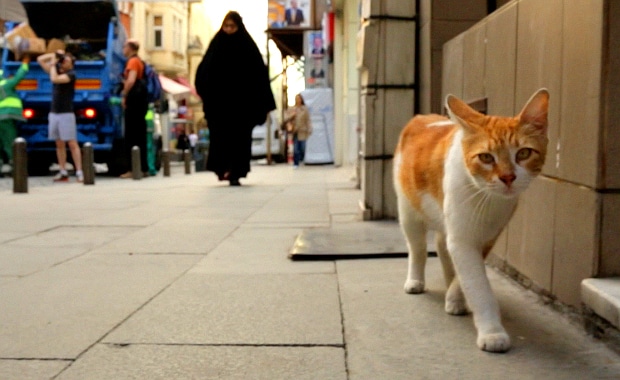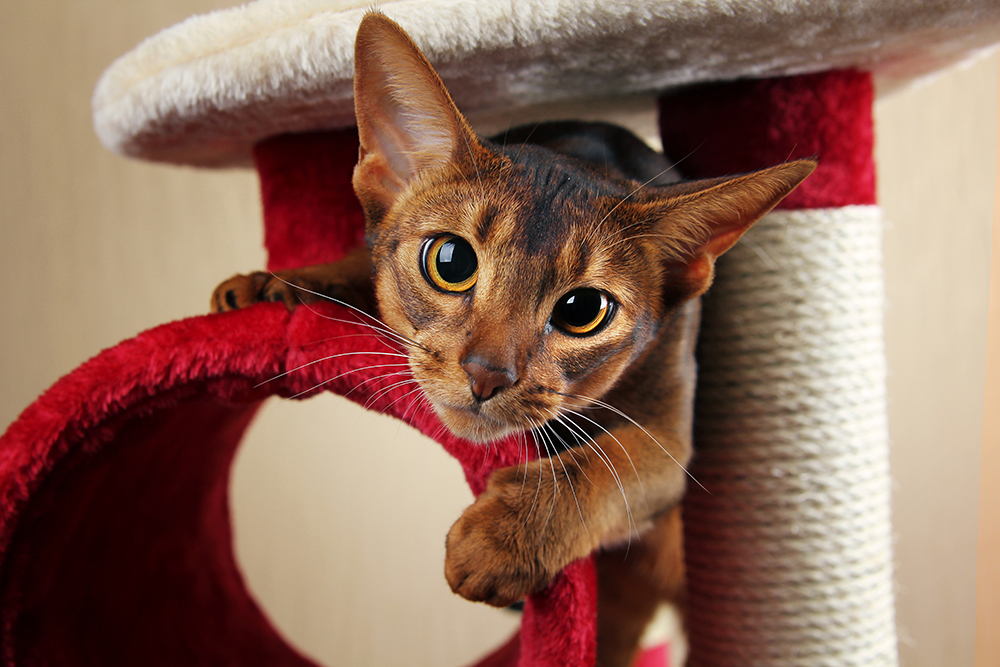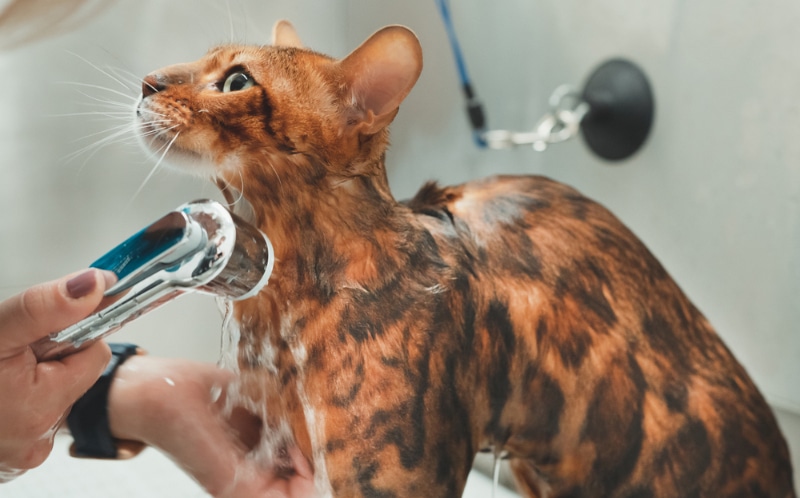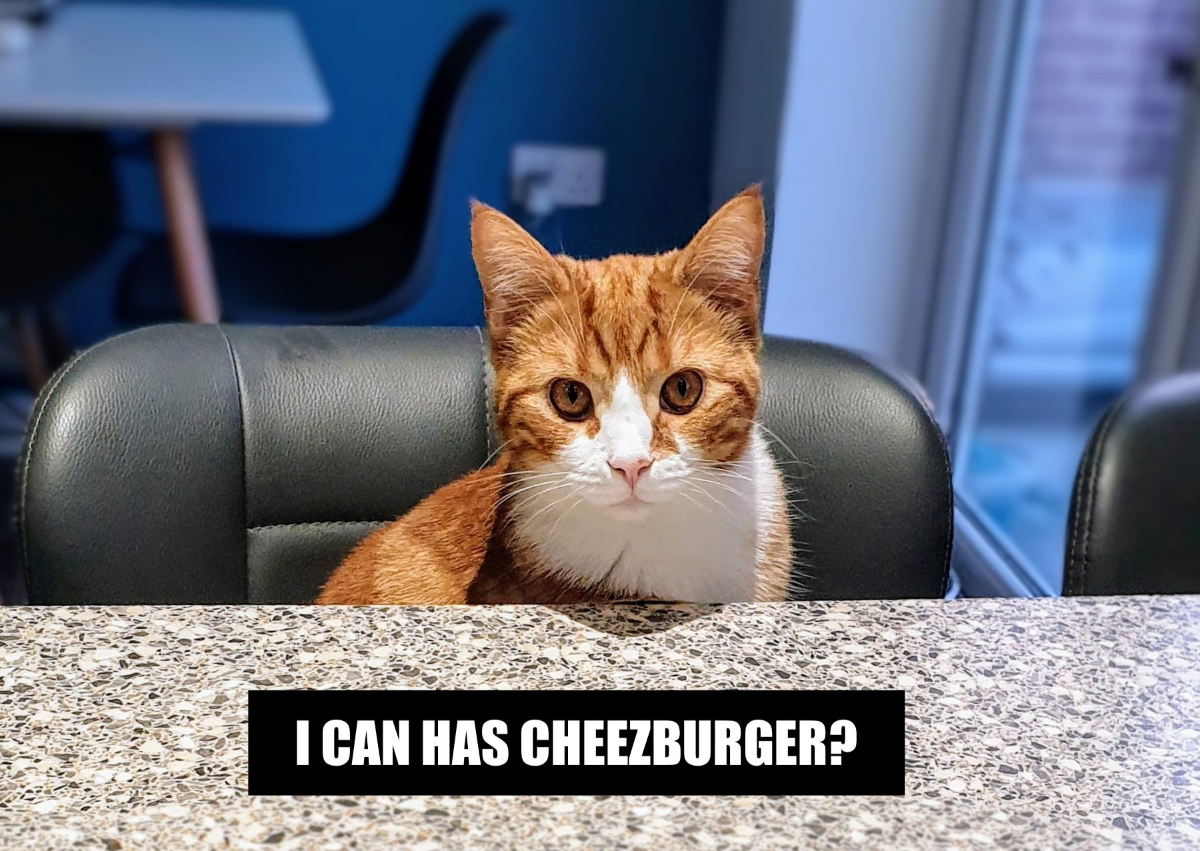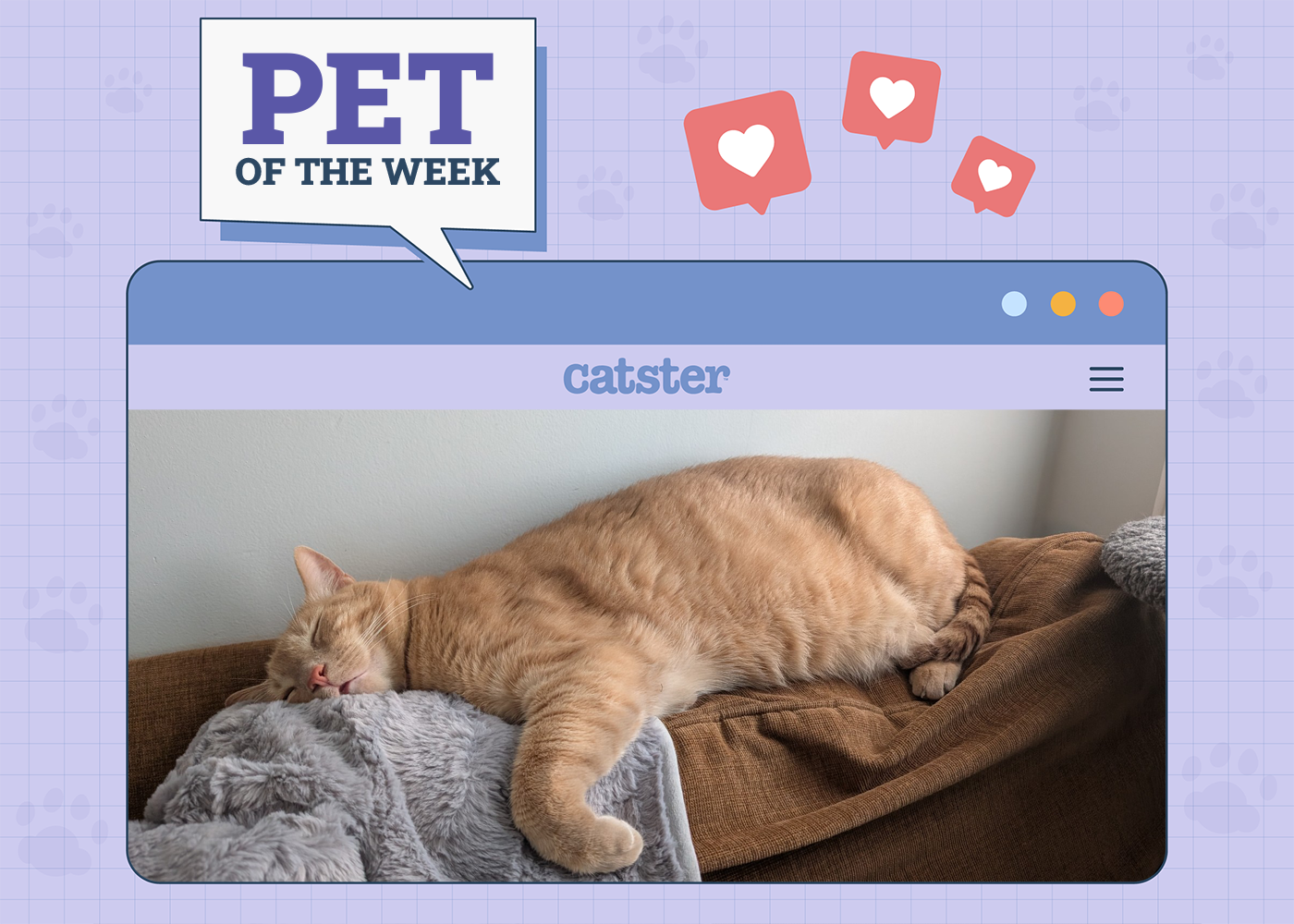The film, Kedi introduces us to a big family with many pets. The family, in this case, is the human population of Istanbul, while the pets are the hundreds of thousands of street cats who live among them. Like any family relationship, the ones in this documentary by director Ceyda Torun are blessed by the bonds of love and companionship but also fraught with the potential for heartache. The members of this big urban household depend on one another and benefit from each other’s presence. Overall, the situation forms a scale model of existence itself, with all the associated ups and downs, humor and tears, connection and loss. Kedi is a powerful film indeed.
In Kedi, the cats we see living in Istanbul differ from feral colonies and strays common in the U.S. For one thing, they live a lot more places than on the street. If Torun has accurately represented Istanbul’s situation in Kedi (the Turkish word for “cat”), felines are omnipresent. They occupy streets, sidewalks, shops, open markets, cafes, window ledges, balconies, awnings, storage areas, piers and fishing boats — as well as car hoods and motorcycle seats.
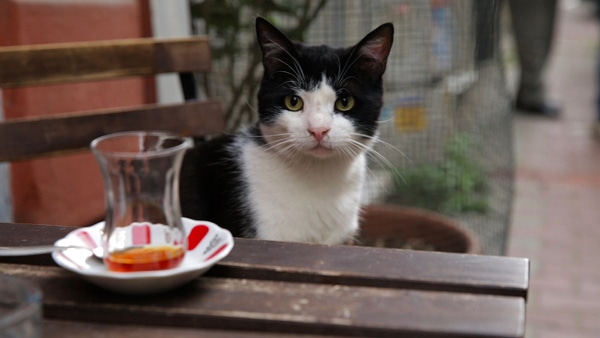
Yet the city doesn’t resemble a hoarding nightmare writ large, with pervasive parasites, deformities and disease. Rather, most cats in the film look like what Americans would recognize as pets — they’re clean and healthy, playful and confident, good with people. About halfway through the 80-minute Kedi, one begins to understand why. The people of Istanbul care so intensely about the cats, it’s as if the city’s human population were a big family, and the street cats its communal animal companions.
The situation is not all sweetness and light. Kedi introduces us to some sick cats, as well as many kittens whose fate we never learn. There is no mention of spay/neuter. We do, however, meet several people who routinely bring sick or injured cats to veterinarians and cover the costs themselves or, in the case of one cafe owner, seek donations from their clientele. Kedi gives the impression that such acts are relatively common, which is believable when we learn that so many people in any given location know the cast and personalities of their local feline troupe.
Kedi shows us the potential motivation behind such altruistic attitudes: The cats have helped people just as people have helped them. Humans in the film — men and women alike — reveal intense emotional connections to the cats and profound changes the animals have accommodated.
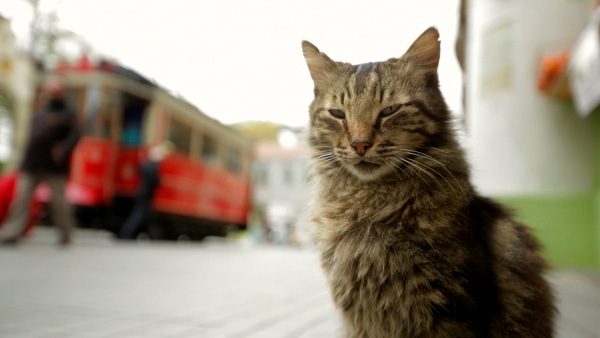
“If I hadn’t met cats, I would’ve had a very troubled childhood,” says one artist, who later compares cats to superheroes such as Spider-Man and Superman.
Says another man who daily feeds scores of cats throughout the city, “This really is therapy.” He credits cats with helping him overcome a severe psychological crisis in 2002. “Let’s just say they make a person fall in love again,” he reveals.
We meet a woman who cooks 20 pounds of chicken a day for the many cats she feeds.
“My therapist tells me I try to heal my own wounds by healing theirs,” she says.
Says a man who feeds cats outside his fish market, “The love of animals is a different kind of love. People who don’t love animals can’t love people either. I know that much.”
Another business owner pets a gray tabby named Bengü and says, “Maybe she’s like my child.” He then turns to the cat, still petting her, and says, “You really know how to live.”
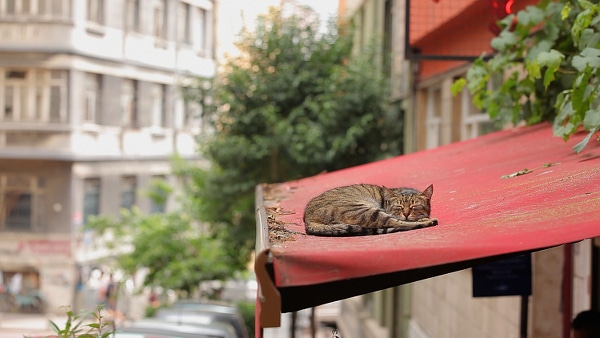
Kedi is a gorgeous film. Torun, who grew up in Istanbul, and cinematographer Charlie Wuppermann intersperse fast and slow movement as well as grand and tiny scales to convey their points in Kedi. Thematically, we see literally hundreds or even thousands of cats in quick takes throughout the film, yet we meet and get to know only seven cats intimately. Visually, we fly numerous times above the gorgeous, colorful buildings and waterfront areas of Istanbul, and just as often we’re mere inches away from the wide eyes and spry whiskers of a cat. Similarly, quick-action sequences with up-tempo music or loud street sounds are punctuated with silent, slow-motion shots.
Several people in Kedi contemplate the nature of being through observing the cats.
“It’s said that cats are aware of God’s existence, but that dogs are not,” says one man. “Dogs think people are God, but cats don’t. They’re not ungrateful, they just know better.”
A woman in a park offers: “Having a relationship with cats must be a lot like being friends with aliens.” Even though you have no common language, she says, “You make contact with a very different life form, open a line of communication with one another and start a dialogue.”
We learn that the seemingly symbiotic relationship between people and cats in Istanbul has existed for ages. Cats arrived via ships in ancient ports, and the populations have interacted for thousands of years.
“Without the cat, Istanbul would lose part of its soul,” a narrator says.
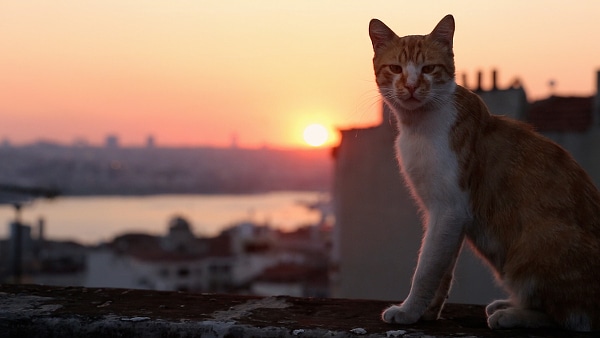
Toward the end of Kedi we learn that, on a large scale, encroaching urban development threatens to displace multitudes of cats. On a smaller scale, we wonder what will happen to any of our seven characters or some of the kittens we’ve seen briefly — as well as the psyches of the people who care for them.
Kedi’s ending is neither conclusively uplifting nor tragic, but it is intensely cathartic. It leaves us simultaneously dreading the worst yet still hoping all the cats and people we’ve met will continue living happy, uninterrupted lives in perpetuity.
“We’re more worried about what will happen to the cats than what will happen to us,” says a person whose business is also in danger of being displaced by redevelopment.
This underscores a theme offered by others, that the street cats are symbols of what we all face in the world, and that reaching out to help them could bring about our own salvation.
Kedi opened Friday, Feb. 17 2017 in Los Angeles and Orange County, California, and opened the previous weekend in New York. Visit the Kedi website to order a digital copy or to see other available platforms.

